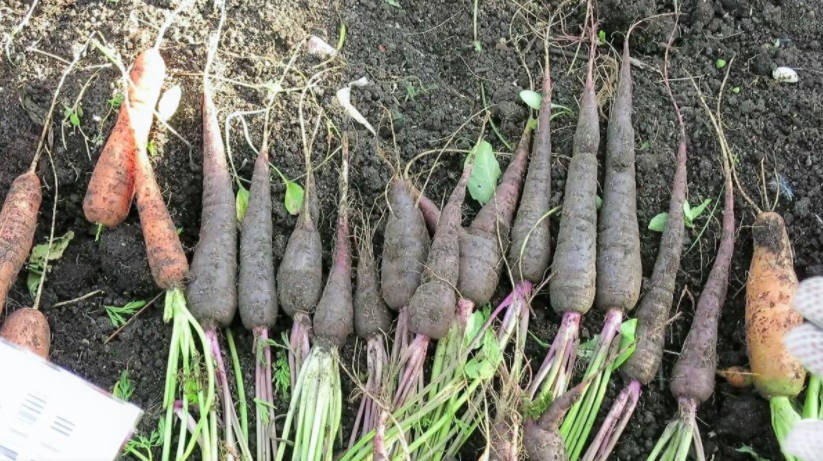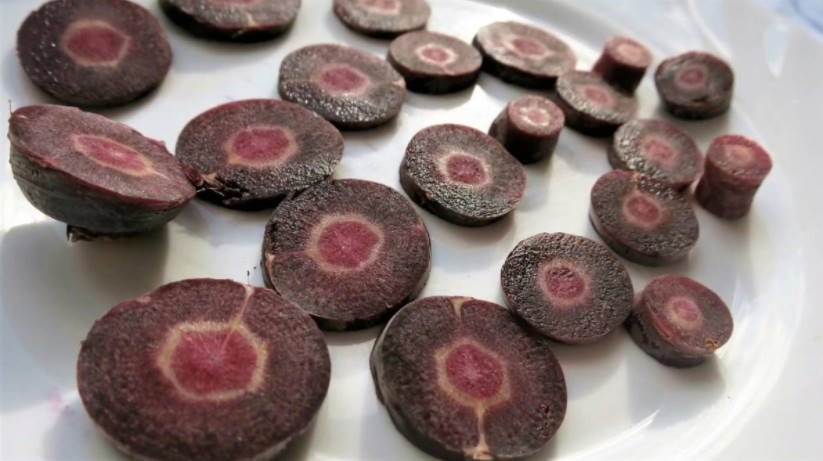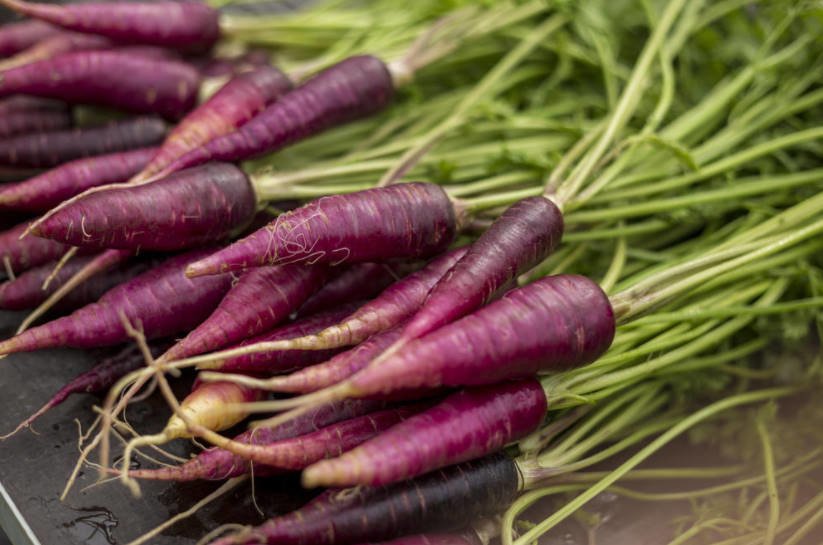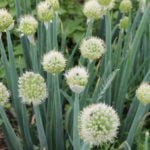Carrots on our tables are one of the most popular vegetables along with potatoes, cabbage and onions. We are used to its bright orange appearance, but it was not always so.
The progenitor of the modern carrot was not orange, but purple or yellow. And it remained so until the XVI century, when orange carrots were bred in the Netherlands, which turned out to be much sweeter than the original.
Why do breeders remember the past and focus their efforts on breeding purple varieties and hybrids? You may have noticed that it’s not just the carrots. Recently, purple potatoes, purple cauliflower, even asparagus, peppers and purple peas have become increasingly popular.

Harvest purple carrots
It turned out that such vegetables contain more nutrients. In particular, purple carrots are rich in anthocyanins and lutein carotenoids. Scientists have proven that they are good for the heart and blood vessels, and also slow down the growth of cancer cells.
Growing this unusual carrot is no different from growing an ordinary orange. In addition, modern varieties and hybrids are highly resistant to diseases.
This is interesting: in ancient times, purple carrots were used for medicinal purposes. It was used to treat everything from dog bites to syphilis. The root was thought to help treat intestinal parasites, constipation, indigestion, and inflammation of the tonsils.

Carrot slice Deep Purple F1
It should be noted that the flesh of purple carrots can be of different colors. In some varieties, it is uniform, like beetroot, in others-light, yellow or orange. It should be borne in mind that when using such carrots in combination with other products, it will, to some extent, color them in the same way as beets.
But numerous studies in recent years have launched consumer interest in the direction of purple and black varieties, such as” purple dragon”,” Indigo ” and so on, especially since for more than three centuries, the taste of purple carrots has changed only for the better (initially it was sour and bitter).


















